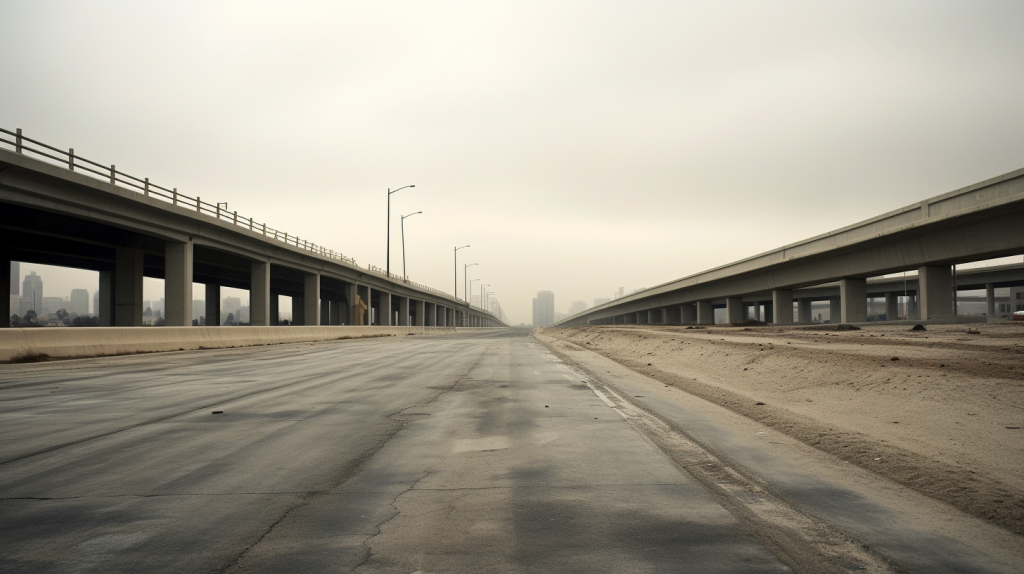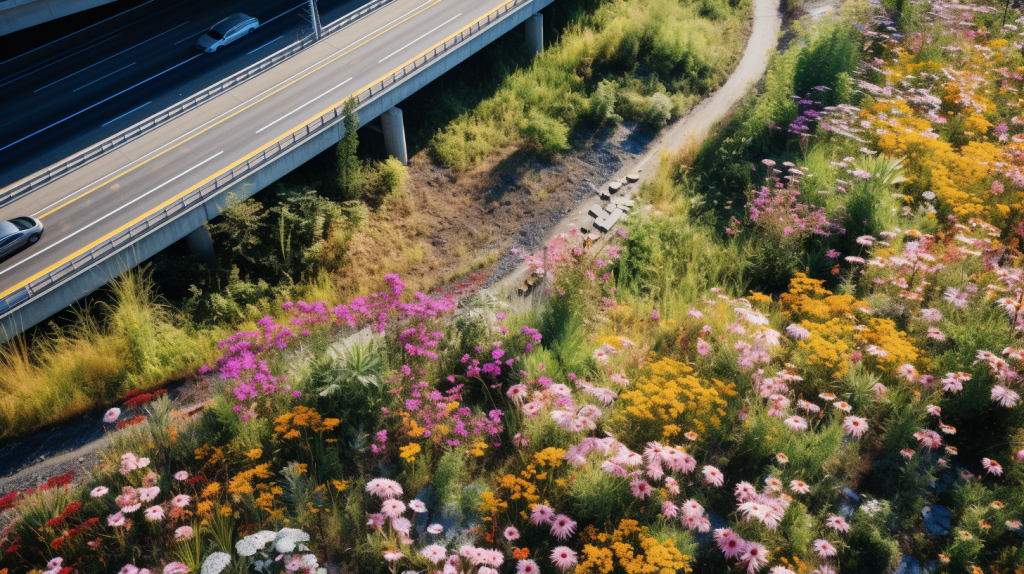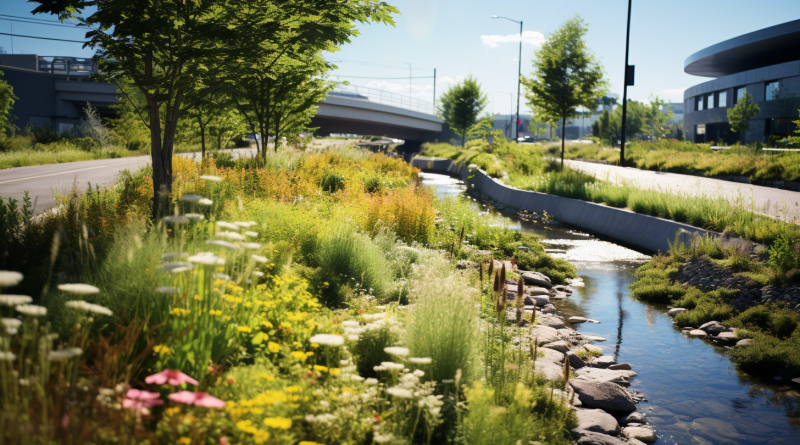Green Stormwater Infrastructure Is A Win For Everyone
Gather round, children, for Handbuilt story hour. A few years ago at the Michigan Transportation Bonanza, an all-day forum in Lansing that is actually surprisingly fun in spite of being populated disproportionately by road engineers, I remember attending a session in which an impressively well-informed young woman presented on the value of green stormwater infrastructure. The argument was that freeway flooding in heavy rainfall could be relatively easily mitigated by increased deployment of GSI. The road engineers were not pleased. But I keep thinking about this as the city and state continue to double down on “concrete-only” solutions, expanding highways needlessly and leaving public spaces ugly and covered in cracked concrete that no one can afford to maintain. There is, however, a better way.

How Road Engineers Think
MDOT has in recent years tried to evade responsibility for the failure of its “Concrete And Concrete Only” approach to stormwater, especially after most of its pumps failed in extreme weather events, resulting in massive flooding of the only way to get around in Southeast Michigan. The argument the agency provided was that the pumps didn’t fail, the power grid failed, and since they don’t maintain the power grid, they can’t be responsible for the pumps failing. (Notably, a city like New Orleans, which has infrastructure that we should probably all be developing in preparation for building climate-resilient cities, has extensive power backup systems– which also often fail).

Road engineers view nature as something not to be collaborated with, but to be conquered. The notion comes with the stench of the locker room. It’s a very “boy” mentality. But we can avoid the “this is ugly and we should make it less ugly” idea by suggesting that we can use research and data to show why there’s a better solution. Researchers at the University of Washington looked into GSI and UHI topics in an expansive study, the summaries of which were published in 2021.
Conclusions? Lots of benefits– reduction in ambient temperature by a minimum of a few degrees– sometimes more like 9°C (17°F) is a huge one in a city that has warm summers, but not extreme summers. If you avoid the worst effects of urban heat island (UHI) and aren’t sleeping in a bedroom that is on a third floor underneath an underinsulated asphalt shingle roof (ahem), it’s presently possible to live in much of Michigan without air conditioning. Urban heat island plus climate change makes AC a must. But we can reduce it with UHI mitigation (from creating green space and shade where once was concrete, which has a super high thermal mass).

There’s been plenty of research around UHI in cities like Washington, DC and Chicago, showing that shade and green space provide the difference between a pleasant, comfortable temperature, and an extremely uncomfortable and possibly even life-threatening heat.
Another benefit is the ability to achieve the twinned benefits of creating attractive public space while also mitigating the worst effects of extreme weather. A focus on especially locally and regionally appropriate, native plants, will mean that we are restoring native habitats, which is better for everyone ranging from tiny insects to me trying to avoid ever having to impale my poor hands on cirsium arvense ever again. We’ve heard a lot lately about the demise of public space in Detroit as a cause for why places like Greektown have so much crime, or why Belle Isle is such a mess these days. Creating even small pockets of public space could go a long way to make it safer for pedestrians to cross the monstrosity of roadway shown below, and it could also eventually serve to create more vibrant places for recreation and exploration at a sort of hyper-local level.

We Can Have Nice Things If We Ask.
There’s plenty of space to achieve this without impeding the divine mandate of automobile dependency. For example, there’s no reason why the freeway access roads in Detroit have three lanes in most places. Expansion of I-94, I-75, and I-96 have, in many cases, reduced the width of these roads. In the case of I-75, this has resulted in the wholesale demolition of historic housing close to the access road. Most of the access roads are designed to allow semi trucks to turn off them, so, it would be challenging to rework the entire transportation grid to prevent semis from using these streets. This would probably also not fly with the city fathers, to say nothing of the road engineers.
But it’s worth discussing, because we can’t afford to maintain the roads we have, and we can’t even get around– whether on bike, bus, car, or even on foot- when swaths of the city are flooded from 500-year rain events that seem to happen every five minutes.
One oft-overlooked approach to climate resiliency involves the aforementioned idea of working with nature rather than against it. Climate resiliency and adaptation are matters not of building giant concrete channels with high-tech sensors, but of reducing impact, reducing operational demands and expenses, and ensuring that we can help nature manage itself, rather than simply trying to quash it with technical innovation. GSI is a comparatively more affordable solution. Let’s investigate it!
This article is part of a series of articles on the Hot Power Grid Summer, which looks at topics of climate, energy, and sustainability in cities during heat waves and hot summer months. Handbuilt has a lot of content on GSI. Check it out!




